As today’s lifestyle has changed into the sedentary one, most people spend a large amount of their time sitting in front of the computers for work, at the table during lunch or in front of the television in the living room at the end of the day.
However, these acts make us feel better by keeping our body in a very comfortable and easy position. Most of the common sitting postures we choose, may benefit us for the short term but can cause long-term health damage. Anything that causes a misuse or overuse of specific muscles, ligaments, or tendons can adversely impact a person’s posture and cause neck pain.
Here, is the description of the common sitting postures that many of us choose throughout the day, and the damage they cause to the back and neck, and how to treat them through Therapeutic Yoga.
1. Cross Leg Position
Sitting in a cross-legged position is a common and comfortable position that most of the people like to sit in, but despite this ease, it may lead to various health problems that should be avoided. Cross-legged position can often lead to back and neck pain and even to disc herniation (slipped disc). This is because of the deformity formed by the thighs when placed on top of each other, which results in an imbalance in the pelvis, increased pressure on the spine, and thus causing the cervical neck pain.
2. Slumped Sitting Position

Sitting slumped to either side with the spine bent can cause wear and tear of the spine leading to the stress conditions in the back and neck causing pain in both.
3. Leaning Forward Position

Due to increasing modernization and digital India concept, most people spend their large amount of time sitting in front of their laptops, computers even at work or at home, leading them to lean forward to get close to the screen or to stabilize ourselves as to help the muscles in a resting position. All of the situations like these lead the people into a variety of problems such as shoulder pain, neck and head pain, knee pain and, of course, lower back pain.
4. Prolonged Sitting Position

Sitting for an extended period without taking a break can cause neck pain by straining muscles and ligaments that support the neck, often lead to the injuries in the spine causing back or neck pain
5. Half Lying Position

The opposite of leaning forward is leaning back i.e half lying position. Most people sit like this on the couch in front of the television, and sometimes people often do it either at work or when gaming on the computer. When they feel pain in the back, especially in the lower back, the tendency of moving to a position that will ease our muscles and strain them less and this sitting allows one to move some of their load onto other parts of the back.
Apart from the modern medical era, Therapeutic yoga has the solution to prevent this neck pain, through their unique variety of asanas and excercises. Here is the list of various asanas that helps in correcting and relieving the neck pain.
1. Bhujangasana (Cobra pose)
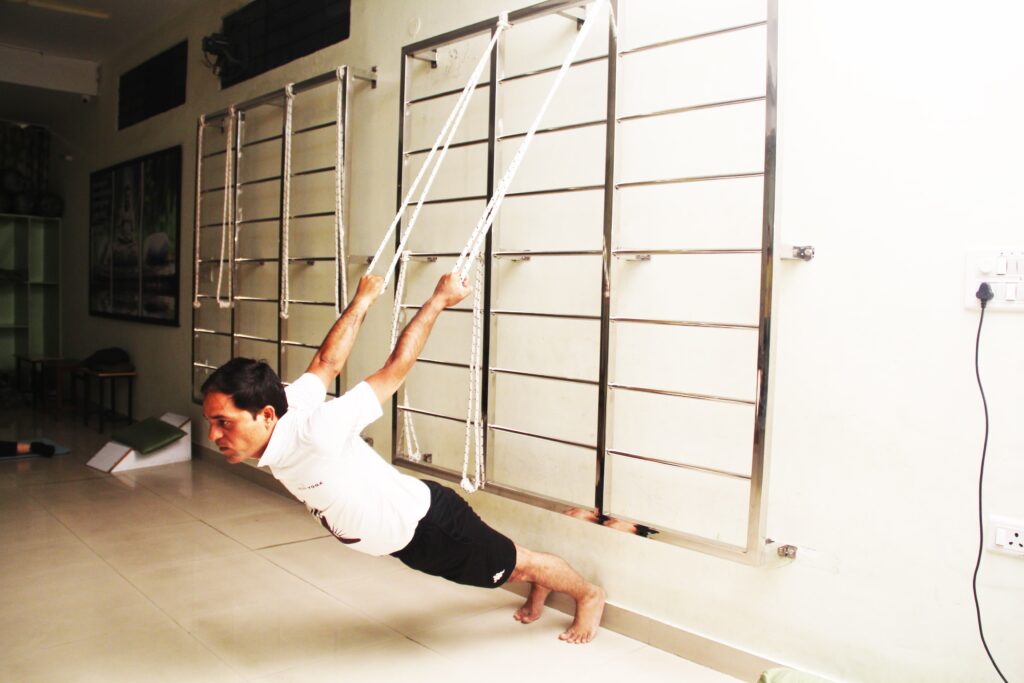
 This asana when performed with the ropes helps in removing the stiffness from shoulder and arms and provide cervical neck pain relief along with making the cervical muscles stronger.
This asana when performed with the ropes helps in removing the stiffness from shoulder and arms and provide cervical neck pain relief along with making the cervical muscles stronger.
2. Sarvangasana (shoulder stand)
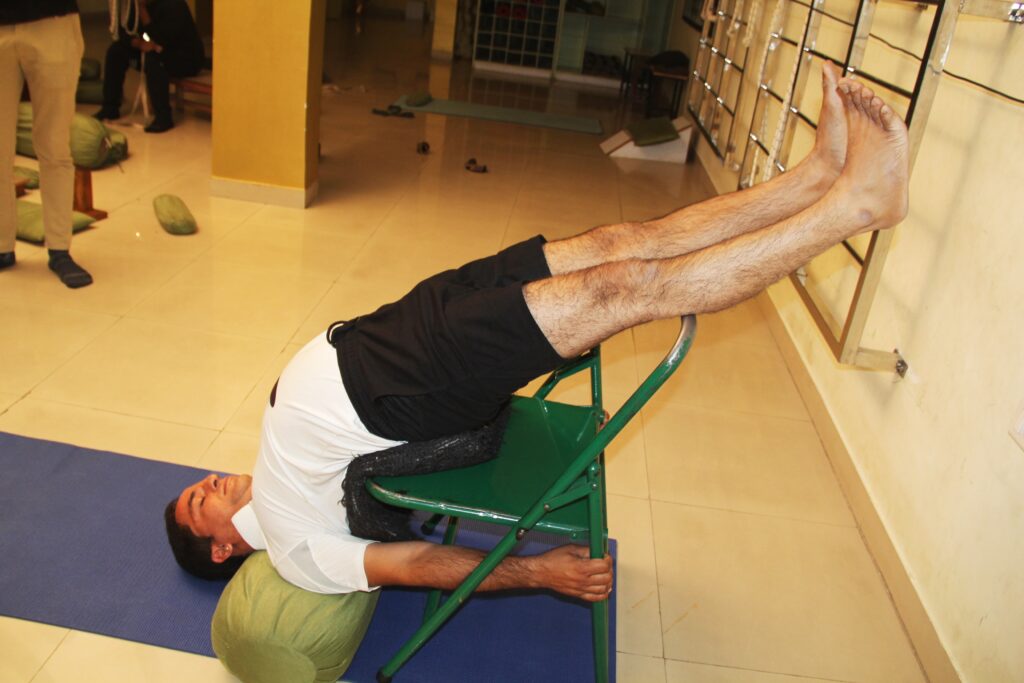
 Usual Sarvangasana can sometimes create stress and compress the neck and cervical bones, therefore performing this with the help of a chair and pillows can reduce the neck pain.
Usual Sarvangasana can sometimes create stress and compress the neck and cervical bones, therefore performing this with the help of a chair and pillows can reduce the neck pain.
3. Urdhva Hatasana (Raised hands pose)
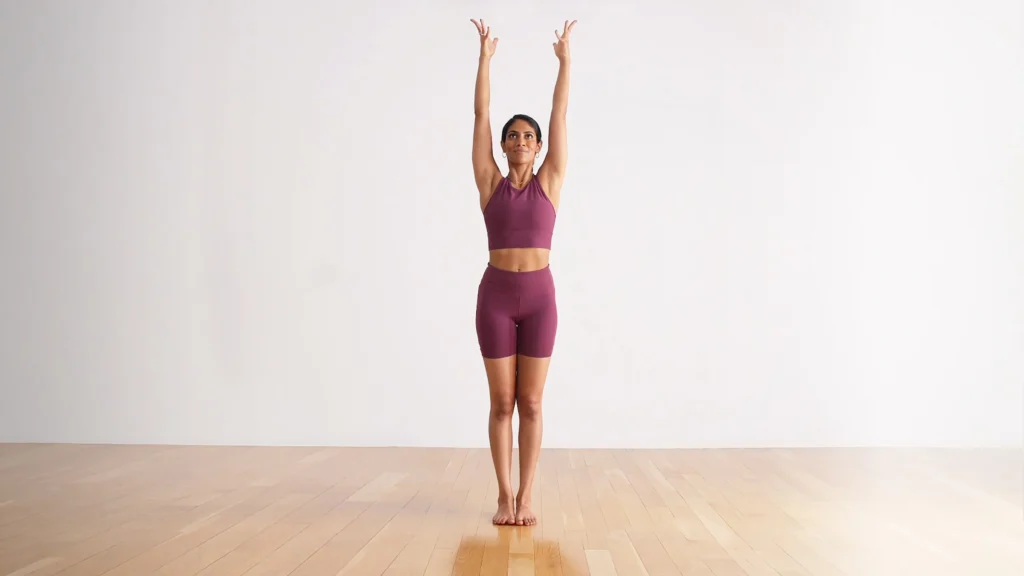
 Practising this asana also removes the stiffness from the muscles of the neck.
Practising this asana also removes the stiffness from the muscles of the neck.
4. Parsvakonasana (Extended side angle pose)
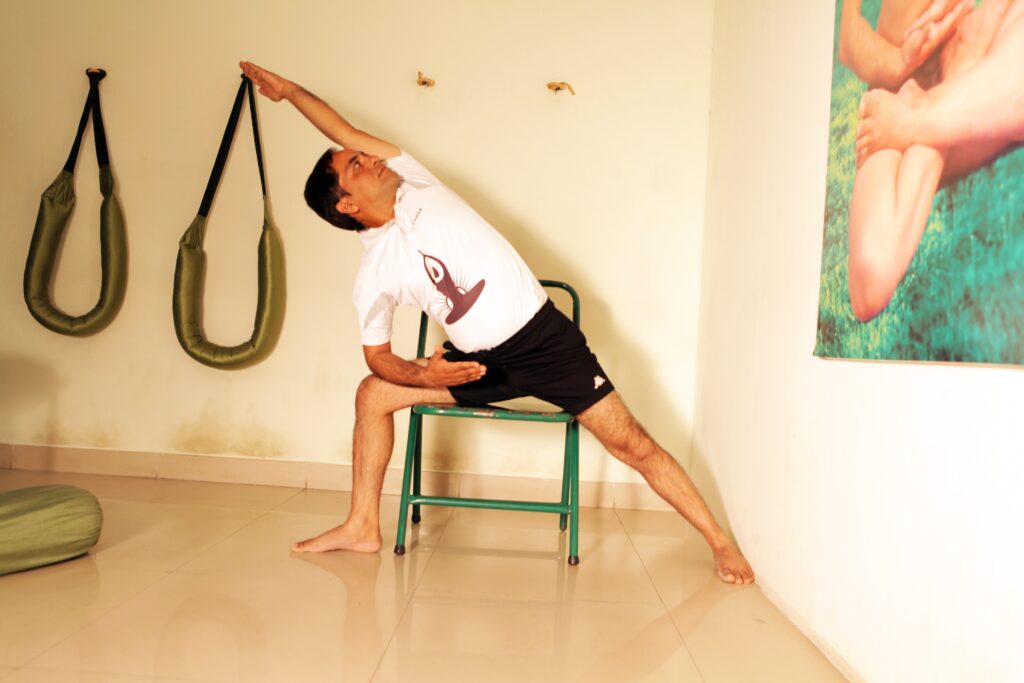
 Performing this asana with the support of the chair makes the cervical part of the spine (neck) flexible and even makes the whole spine flexible.
Performing this asana with the support of the chair makes the cervical part of the spine (neck) flexible and even makes the whole spine flexible.
5. Setu Bandha Sarvangasana (Supported shoulder stand)

 Instead of usual Setu bandh asana, Performing this with the support of thick blankets and pillows, will help in removing the reducing the compression from the neck and gaining the mental relaxation.
Instead of usual Setu bandh asana, Performing this with the support of thick blankets and pillows, will help in removing the reducing the compression from the neck and gaining the mental relaxation.
6. Uttanasana (Standing forward bend pose)
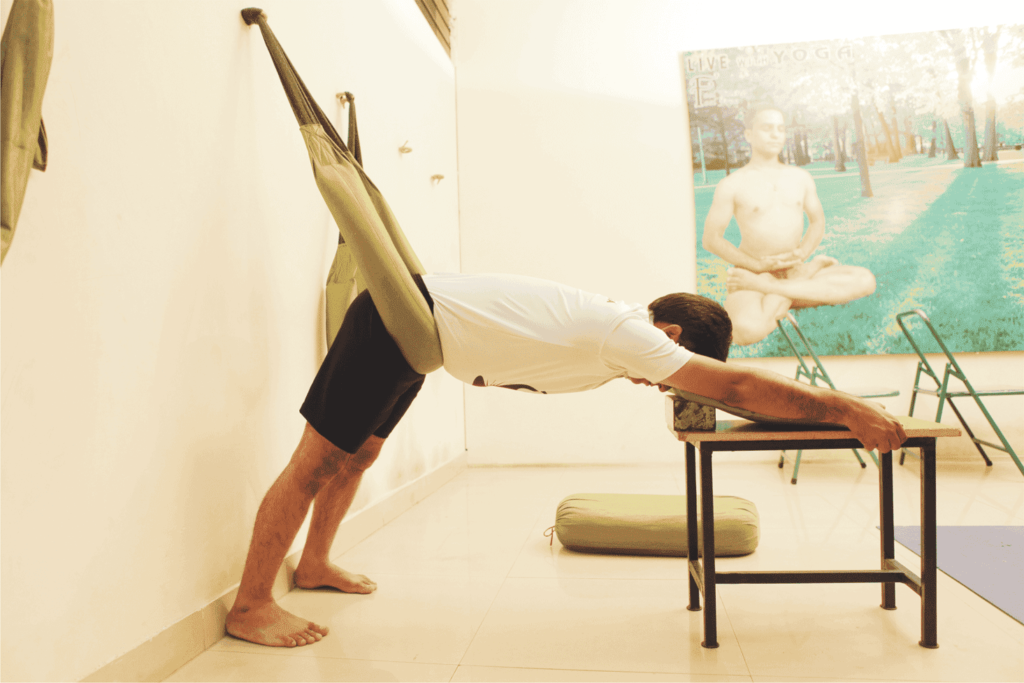
 Practising this asana with the support of bolsters and blankets will help in ease the neck and shoulder pain.
Practising this asana with the support of bolsters and blankets will help in ease the neck and shoulder pain.
7. Bhardvajasana (Twisting pose)
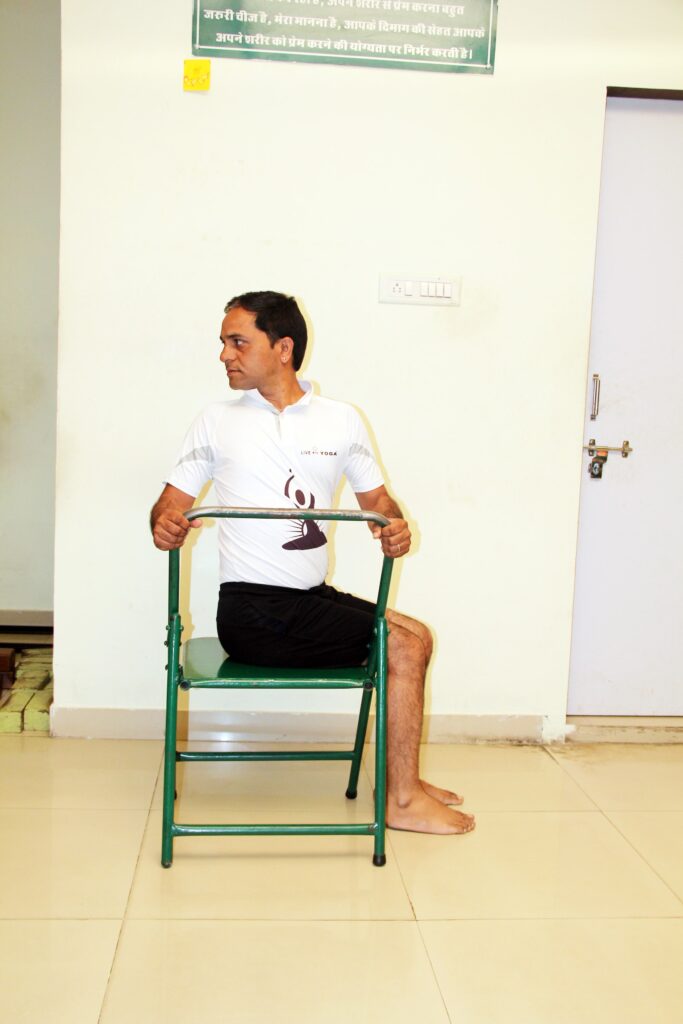
 Performing this asana with the support of a chair or a pillar, makes the cervical twisted, not only the neck but the whole spine which increases its flexibility and also makes shoulder blades flexible.
Performing this asana with the support of a chair or a pillar, makes the cervical twisted, not only the neck but the whole spine which increases its flexibility and also makes shoulder blades flexible.
8. Chakarasana (Wheel pose)
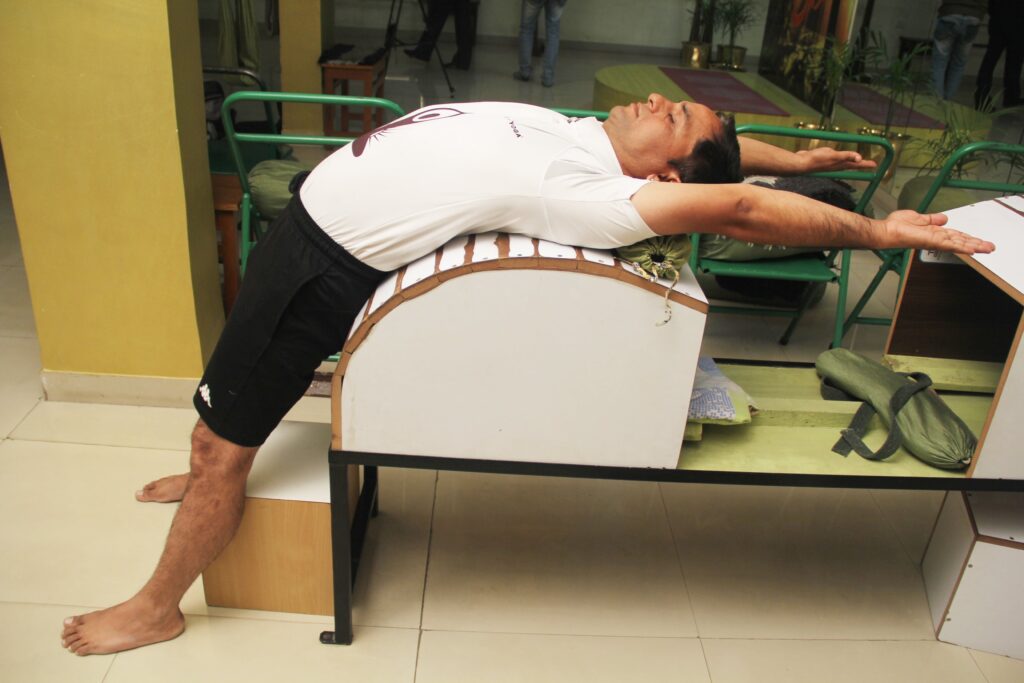
 Performing this asana with the help of a standing table or thick blankets increases the flexibility in spine and neck vertebrates along with proper blood flow in the heart as the chest is wide opened.
Performing this asana with the help of a standing table or thick blankets increases the flexibility in spine and neck vertebrates along with proper blood flow in the heart as the chest is wide opened.
9. Parivrtta Parsvakonasana (Extended side angle pose)
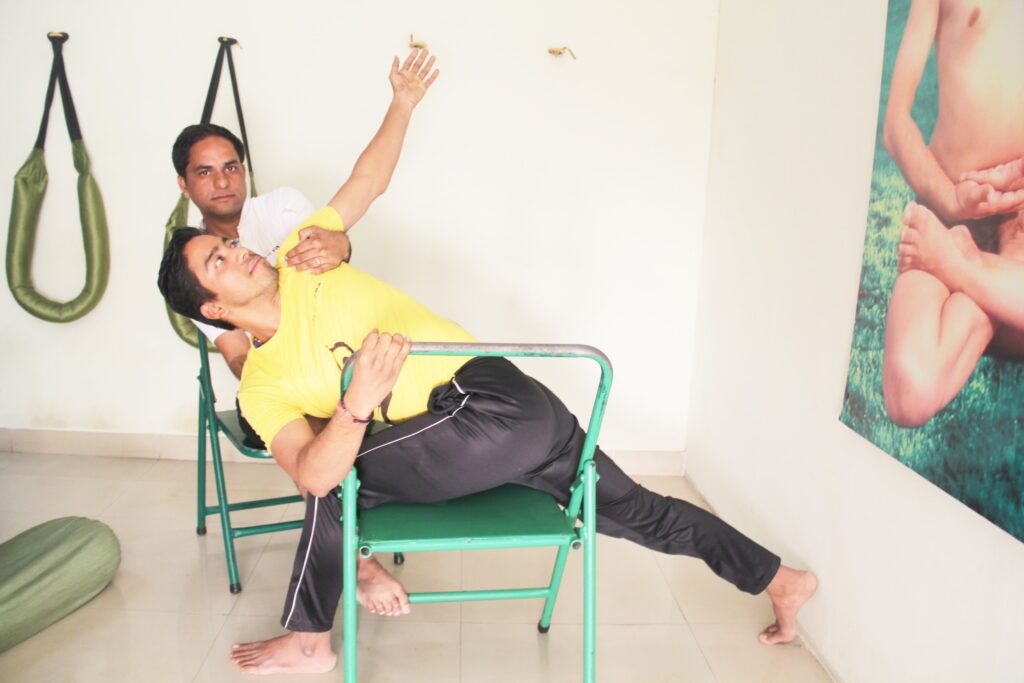
 Instead of the usual Parivrtta Parsvakonasana, try doing this asana with the help of a chair and an expert teacher. This makes the cervical part of the spine (neck) flexible and even makes the whole spine flexible.
Instead of the usual Parivrtta Parsvakonasana, try doing this asana with the help of a chair and an expert teacher. This makes the cervical part of the spine (neck) flexible and even makes the whole spine flexible.
